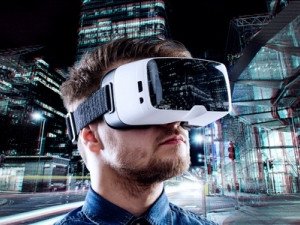
The augmented reality (AR) and virtual reality (VR) industry is shifting its focus from hardware development to expanding applications, according to market research firm TrendForce, which notes the industry continues to grab attention worldwide.
TrendForce forecasts annual global shipments of VR devices will reach 5.1 million units in 2017 and grow to 8.5 million in 2018. However, it says the projected figures exclude mobile VR products.
"This year's CES [Consumer Electronics Show] has shown that the novelty surrounding AR and VR has worn off slightly when compared with the level of excitement during last year's event," says Jason Tsai, TrendForce wearable device analyst.
"With market entrants seeing limited returns for their efforts, only those companies that are truly committed in this field will keep launching new products and exploring new applications, thereby turning concepts into practical innovations."
Tsai notes AR has received more attention at CES compared with VR. He says there were demonstrations of AR smart glasses from brands such as Osterhout Design Group, Vuzix, Epson and Kopin.
Vuzix's products in particular are running on Intel's chips, while ODG's smart glasses are equipped with Qualcomm's latest solution, Snapdragon 835, he explains.
Looking at VR, this year's CES has shown that technology brands worldwide are still launching and developing new devices, Tsai notes.
However, the three leading brands - Sony, Oculus and HTC - are now concentrating mainly on improving the accessories to their devices. "As they are not expected to release their next-generation hardware until 2018, the market demand for VR devices is going to cool down a bit this year."
TrendForce's latest VR device shipment projection indicates around 2.5 million units of PlayStation VR (PS VR) will be shipped worldwide this year.
It notes PS VR will, therefore, make up the largest share in the total annual shipments of 5.1 million units. Also, device shipments of HTC and Oculus for the entire 2017 are estimated to reach 0.6 million and 1.2 million units, respectively. Excluding the top three vendors, combined VR device shipments from other brands in 2017 will come to about 0.8 million units, TrendForce states.
Tsai adds this year's CES has also witnessed a further expansion of applications for AR and VR technologies in addition to the usual VR gaming.
The AR/VR industry is taking its solutions to areas such as tourism, work, warehousing operations and drones. "Growing these application markets will be critical to the foundation of the industry, as opposed to hardware vendors putting out similar products," Tsai points out.
TrendForce estimates the combined annual revenue of VR hardware and software markets will hit $3.4 billion in 2017.
It says industry participants will need a period to find and develop profitable applications before explosive revenue growth can occur. TrendForce anticipates both hardware and software markets will finally start to take off in 2020, when their combined annual revenue is forecast to reach $22.4 billion.
Share